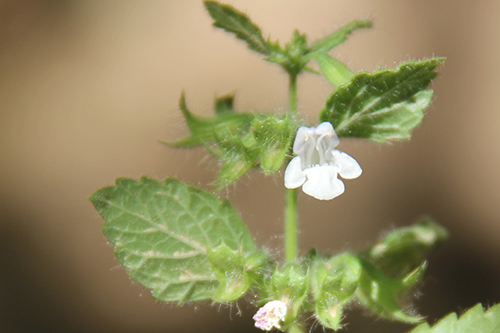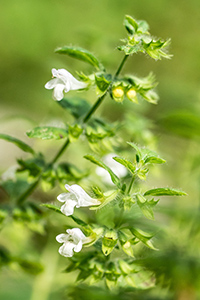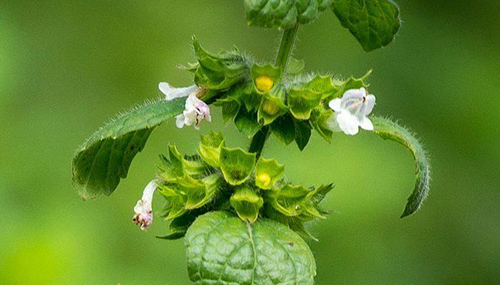Contents
The great 11th-century Arabic physician Ibn Sina (Avicenna) said the bee balm plant “has the admirable property of giving comfort and joyfulness.” From the early 17th century onwards, the Barefooted Carmelites prepared the famous “Carmel water” from this plant. This water became a popular remedy for nervous crises, weaknesses, and syncopes.

Bee Balm Plant Scientific Facts
- Other names: Balm mint, balm, blue balm, cure-all, dropsy plant, garden balm, lemon balm, melissa, sweet balm.
- French: Melissa, cintronelle.
- Spanish: Toronjil, melisa, hoja de limon.
- Environment: In the Mediterranean region, it is farmed nowadays all over Europe and in warm American areas.
- Description: This vibrant plant of the Labiatae family grows from 40 to 70 cm high. Its toothed, rough leaves give off a lemon scent.
- Parts of the plant used medicinally: Leaves and flowers.
Healing Properties and Uses

The leaves and flowers of the bee balm plant contain 0.25% essential oil that is rich in citral and citronella aldehydes, to which it owes its antispasmodic, sedative, carminative (to reduce flatulence), digestive, and antiseptic actions. It is helpful in the following cases:
- Nervous problems. Excitation, anxiety, tension headaches (headaches of nervous origin).
- Stress and depression. Balm is often recommended in stress and nervous depression cases because of its gentle sedative and balancing effects on the nervous system.
- Insomnia. When taken at night, it helps to overcome insomnia.
- Menstrual pain. For centuries, it has been recommended to ease menstrual pains.
- It may also be helpful for palpitations, abdominal spasms, colics, flatulence, nausea, and vomiting.
- It is antiseptic, antifungal (fights skin fungi), and antiviral when applied externally. Its action has been proven helpful against the herpes virus and type 2 myxoviruses.
Lemon balm is an excellent herb for infants and children suffering from colds, flu, or fever. A cup of lemon balm tea sweetened with honey and given to feverish children while covered in warm blankets helps break the fever. You can also put the child in a bath filled with tea and then cover them with blankets to help sweat it out. Lemon balm is also used to treat depression-induced sicknesses and melancholy. The herb is also helpful for hepatitis, nervous indigestion, headache, epilepsy, insomnia, cholera, and hysteria.
Bee Balm Plants for Sale
Carmel Water

Carmel water is not recommended due to its high alcohol content. The author met an older woman who managed to obtain her dose of alcohol in pharmacies by buying several bottles of Carmel water, which she frantically drank.
How to use Bee Balm
- Infusion
- Dry extract. It is usually administered in a dose of 0.5 grams thrice daily.
- Compresses. Applied with an infusion of 30-50 grams per liter of water.
- Baths. The same infusion as compresses added to the bathwater (2-3 liters per bathtub).
- Frictions. Applied with the essence dissolved in alcohol (balm alcohol).
Infusion: Steep for five to fifteen minutes and regularly take six ounces as needed. Tincture: Take thirty to sixty drops ½ to one teaspoon as needed. Fluid Extract: Take ½ to two teaspoons as needed. Powder: Take ten #0 capsules (60 grains) as required.
DISCLAIMER: All content on this website is presented solely for educational and informational objectives. Do not rely on the information provided as a replacement for advice, diagnosis, or treatment from a qualified medical expert. If you are pregnant, nursing, or have any preexisting medical concerns, talk to your doctor before using any herbal or natural medicines.
REFERENCES
- George D. Pamplona-Roger, M.D. “Encyclopedia of Medicinal Plants.” George D. Pamplona-Roger, M.D. Encyclopedia of Medicinal Plants. Ed. Francesc X. Gelabert. Vols. 1 San Fernando de Henares: Editorial Safeliz, 2000. 163. Print.[bee balm plant]
- Vance Ferrell Harold M. Cherne, M.D. The Natural Remedies Encyclopedia [Book]. – Altamont, TN: Harvestime Books, 2010. – Vol. Seventh Edition: 7: pp. 166.
- Endocrine journal study: https://www.endocrine-abstracts.org/ea/0026/ea0026p249.htm
